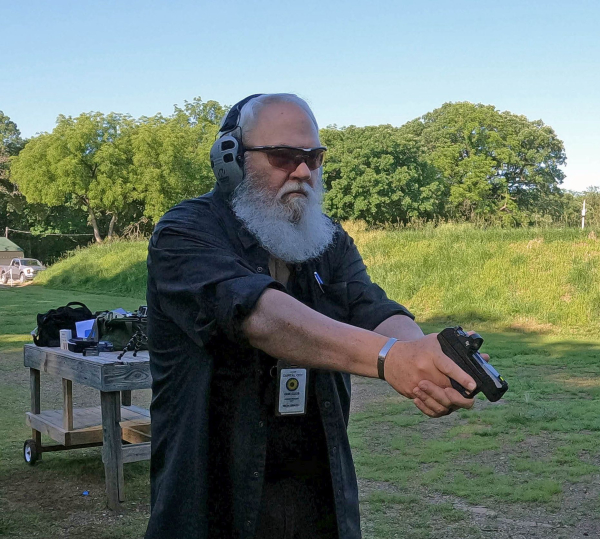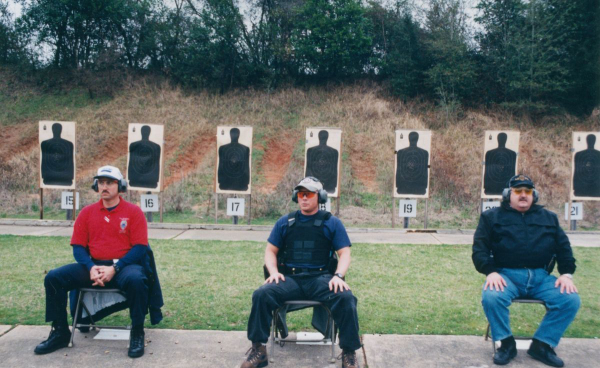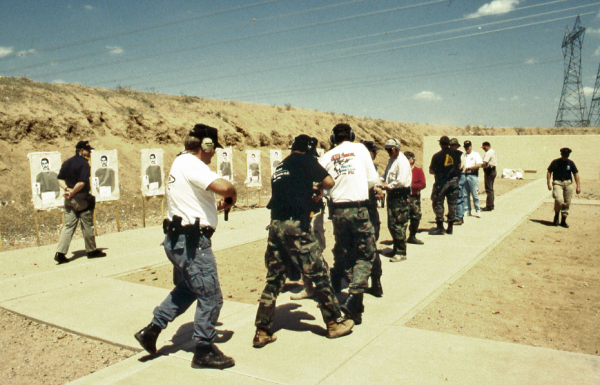
The following story isn’t real. It is similar to incidents from decades past, but this exact situation didn’t happen -- to me.
I’d been invited to observe basic police firearms training and most of it went without issue. Then students all had to do a movement exercise, getting out of a car with the driver’s side up-range, move to a ‘doorway,’ then go through it headed downrange.
The first student to do so, based on the scenario, elected to take the shotgun (what -- no carbine?), carefully maneuvered it out of the car without muzzling the up-range folks, moved to the door and got ordered to stop. Then there was a discussion about “all muzzles are always down range, what’s wrong with you?”)
During a break, three students approached me and asked me about the situation; wouldn’t I have selected the shotgun? How would I have gotten it out in that situation? Where is “downrange” when you’re out in the world?

I sternly replied that I was a guest of the facility and wouldn’t talk trash on it or its staff. I also allowed as how I’d be available during the evening break to discuss it with them. What follows is the lecture that I would have given.
The basics of operational firearms safety need to include what I’ve heard referred to as the “Queen of Firearms Handling Rules --” Never let the muzzle cover anything you don’t wish to destroy. Now that’s shorthand, a mnemonic device. It covers the concept of muzzle discipline, and it ensures the experienced hand redirects the muzzle any time a non-threat gets in front of it.
A point of operational handling rules is about not covering a mindless individual who wanders into the battle space in front of your firearm.
Does that happen?
Yes, it does – all the time. It happened on my last operational employment of a handgun 20 years ago. As the narcotics supervisor, I was involved in search warrant operations and one of the targets was mobile. We wanted him present during the search, but he was known to be dangerous and it was decided that taking him in a high-risk car stop, where we could exert some control over the scene, was better than inside a building he knew far better than we.

My UCs were following and waiting for our interdiction cars to get in place and I was following at a distance, not wanting to impede the approaching uniformed assets. As the marked cars came into the area, the target made a turn and was headed to approach a T-intersection. We had enough help to have that east-west street blocked at the nearest intersections in front of the target as it approached the area from the north. The car was stopped at the last address north of the now-blocked cross-street.
I got out on foot and parallelled the street through yards, meaning to get behind a large tree in a front yard. From there, I would see the target’s car from the side with more detail than the contact officers would see from behind it. I wasn’t aimed in at the car or occupants; With my pistol at guard – a legitimate low ready -- it allowed me a better view of the scene.
Into that view, one of my subordinates moved between me and the target, oblivious to my presence and with no cover from potential incoming rounds.
I hissed at him, “GET OUT OF THE WAY!” Looking over his shoulder, he quickly scuttled back from whence he’d arrived.
That’s all the excitement. The occupants of the car meekly complied with the situational dominance the interdiction folks established. The procedure takes a while to tell so I won’t.
Muzzle discipline kept me from muzzling one of my guys – and the citizens in the target vehicle.
— Rich Grassi